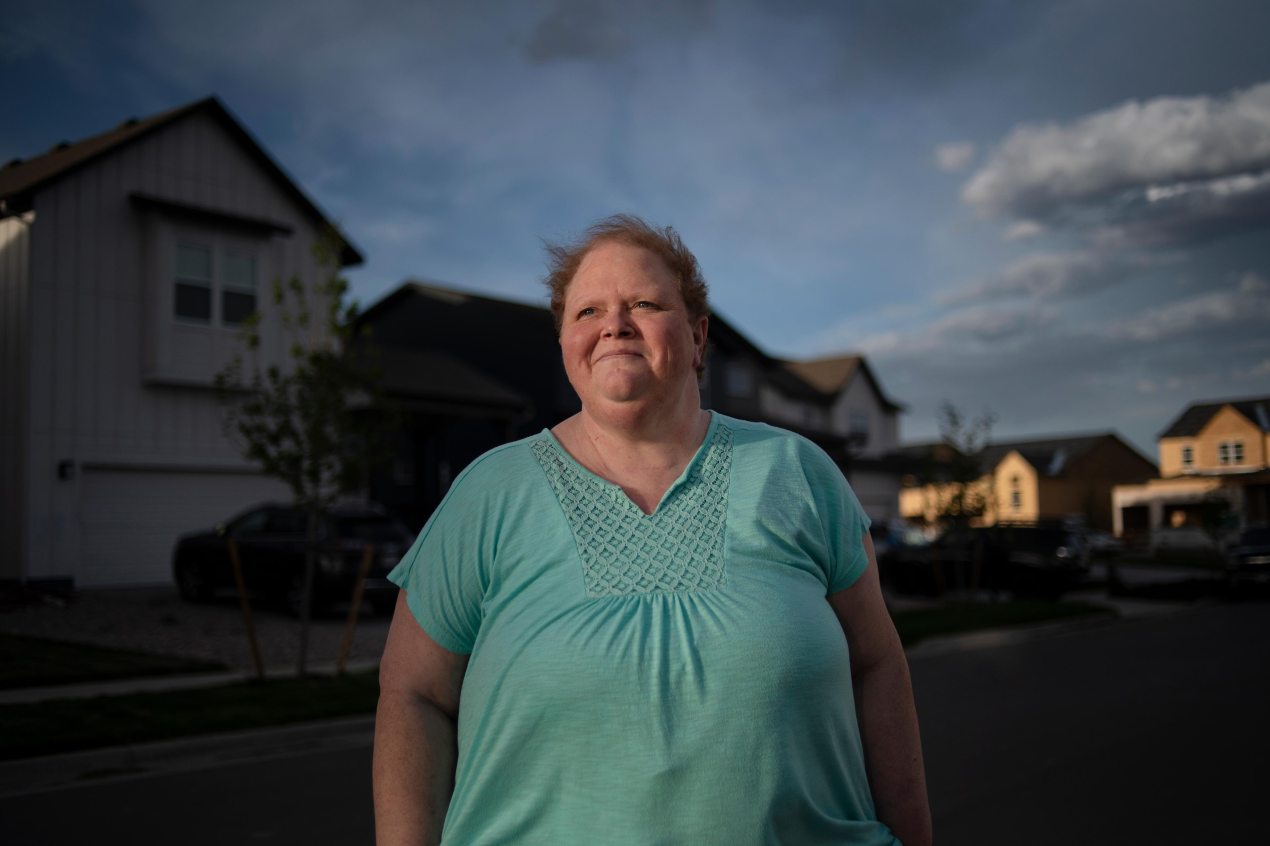It was five years of hell.
Jim Powers
Cindy Powers, 52, Greeley, Colorado
Approximate Medical Debt: $250,000
Medical Issue: Twisted intestine
What Happened: Cindy Powers was 34 when doctors discovered she had a twisted intestine, a potentially life-threatening condition that doctors told her required immediate surgery.
She and her husband, Jim, were living outside Dallas at the time, where Jim had a job with a school district.
They had health insurance. But it couldn’t protect them from the flood of medical bills that swamped them after Cindy’s diagnosis.
Cindy’s first surgery, which lasted nine hours, would be followed by 18 more operations at hospitals across the Dallas-Fort Worth area. “Nobody was able to come up with a solution,” Jim said.
Cindy had recurring infections and hernias. Persistent pain left her addicted to the opioids she’d been prescribed.
“It was five years of hell,” Jim said of his wife’s medical ordeal.
By the time a surgeon finally repaired Cindy’s intestines in 2009, the couple had some $250,000 in medical debt. They declared bankruptcy.
The Powers also ended up losing their home when their mortgage was sold and the new lender rejected the payment plan set up through the bankruptcy.
A few years later, their adult daughter died. And in 2017, Cindy and Jim moved back to Colorado, where Cindy was from.
What’s Broken: How much medical debt contributes to housing insecurity is difficult to measure, as many people forced out of their homes face a mix of financial challenges.
But a recent nationwide poll by KFF suggests that the debt from health care is forcing millions of people from their homes.
About 1 in 12 Americans with health care debt say they have lost their home to eviction or foreclosure at least in part because of what they owed, the survey found.
And about 1 in 5 say they or someone in their household have moved in with family or friends or made some other change in their living arrangement because of health care debt.
What’s Left: After the bankruptcy and the move, the couple slowly got back on their feet financially.
Jim began work at an animal welfare group. Cindy, whose health has improved, got a job as well. The couple adopted their daughter’s girl, who’s now in sixth grade.
Then Jim needed prostate surgery. As he worked to scrape together the $1,100 he owed, he was sued by a debt collector.
“Things have got to change,” Jim said.
About This Project
“Diagnosis: Debt” is a reporting partnership between KHN and NPR exploring the scale, impact, and causes of medical debt in America.
The series draws on original polling by KFF, court records, federal data on hospital finances, contracts obtained through public records requests, data on international health systems, and a yearlong investigation into the financial assistance and collection policies of more than 500 hospitals across the country.
Additional research was conducted by the Urban Institute, which analyzed credit bureau and other demographic data on poverty, race, and health status for KHN to explore where medical debt is concentrated in the U.S. and what factors are associated with high debt levels.
The JPMorgan Chase Institute analyzed records from a sampling of Chase credit card holders to look at how customers’ balances may be affected by major medical expenses. And the CED Project, a Denver nonprofit, worked with KHN on a survey of its clients to explore links between medical debt and housing instability.
KHN journalists worked with KFF public opinion researchers to design and analyze the “KFF Health Care Debt Survey.” The survey was conducted Feb. 25 through March 20, 2022, online and via telephone, in English and Spanish, among a nationally representative sample of 2,375 U.S. adults, including 1,292 adults with current health care debt and 382 adults who had health care debt in the past five years. The margin of sampling error is plus or minus 3 percentage points for the full sample and 3 percentage points for those with current debt. For results based on subgroups, the margin of sampling error may be higher.
Reporters from KHN and NPR also conducted hundreds of interviews with patients across the country; spoke with physicians, health industry leaders, consumer advocates, debt lawyers, and researchers; and reviewed scores of studies and surveys about medical debt.
